A new loach genus was only established in 2024, namely Kapuasia. The only species assigned to Kapuasia was K. maculiceps from the great Kapuas River on Borneo. Originally, K. maculiceps was assigned to the large collective genus Nemacheilus. As far as we know, K. maculiceps has not yet appeared aquaristically. Shortly after the genus Kapuasia was established, a second species was described, also from Borneo, but from another large river system on the island, namely the Barito. We have now been able to import this beautiful loach for the first time.
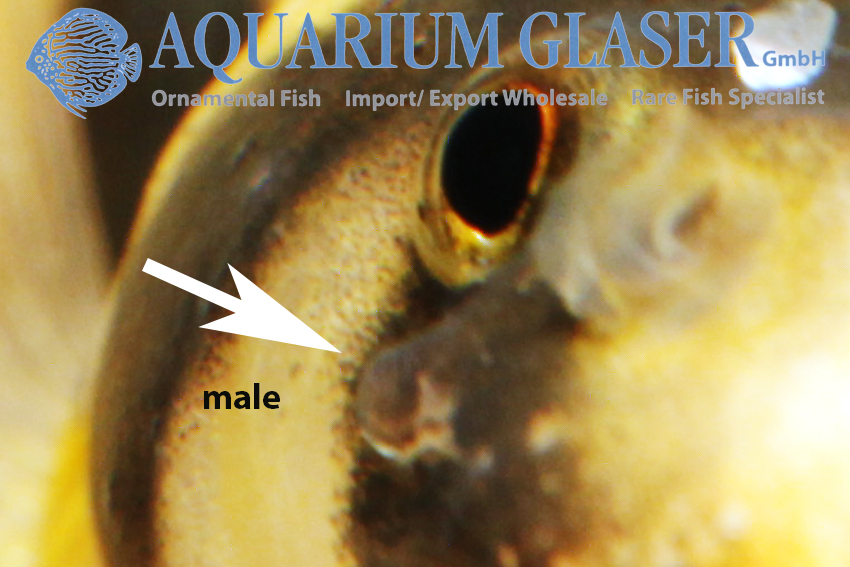
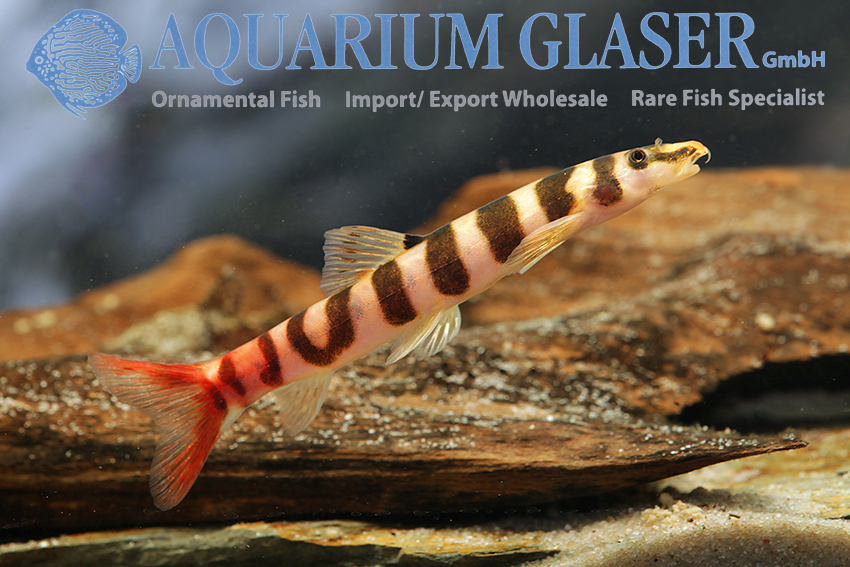

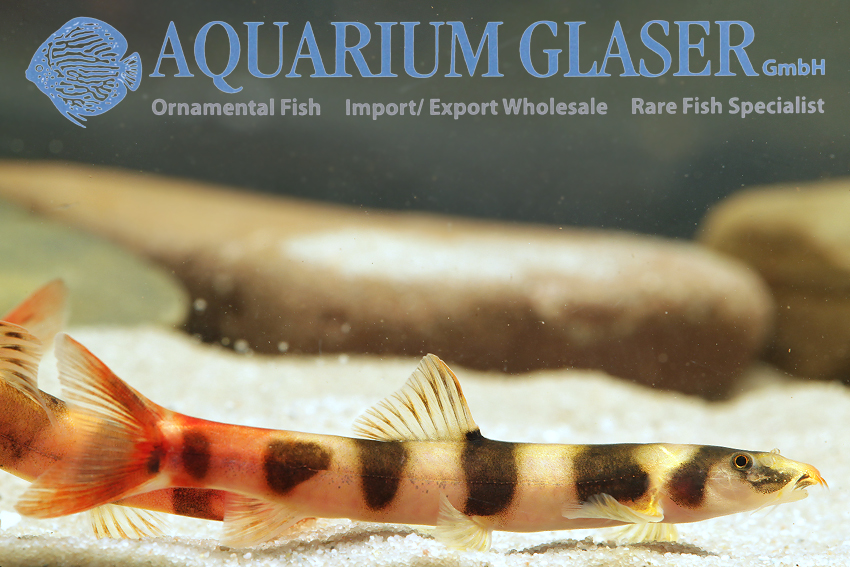


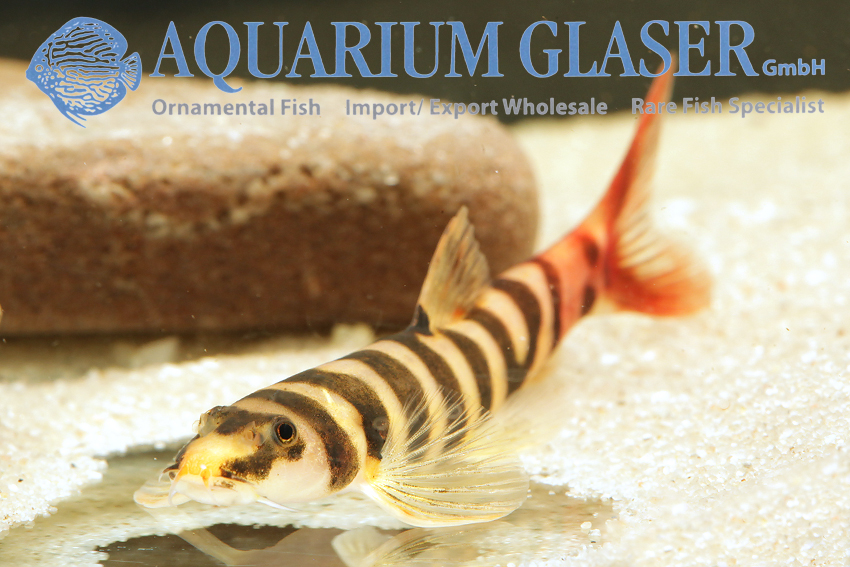
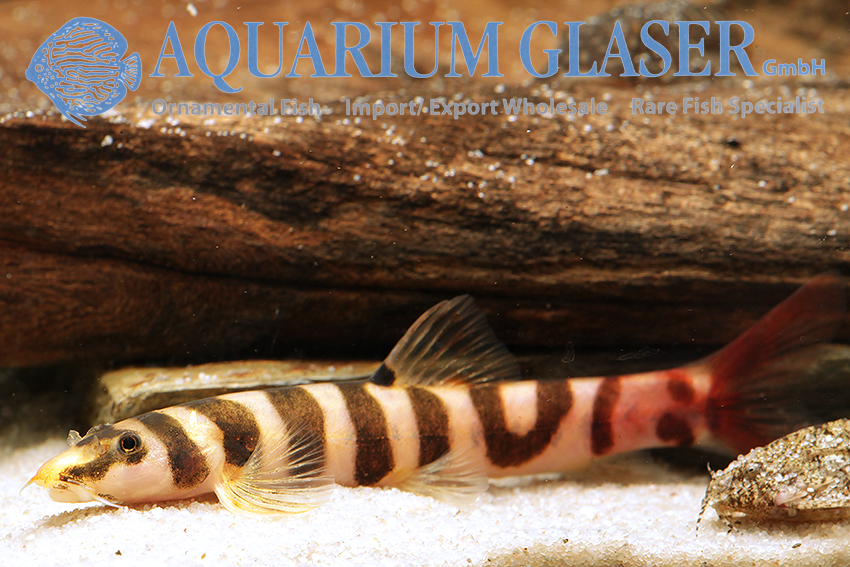
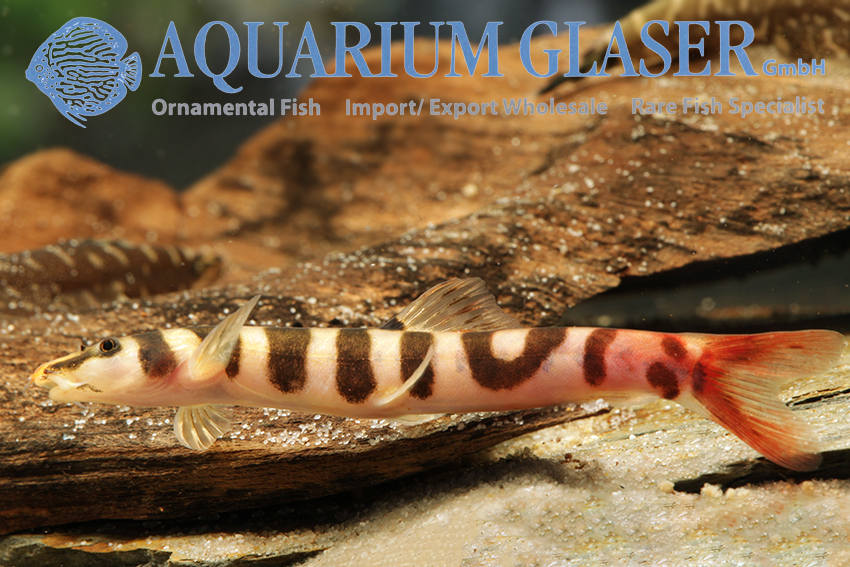
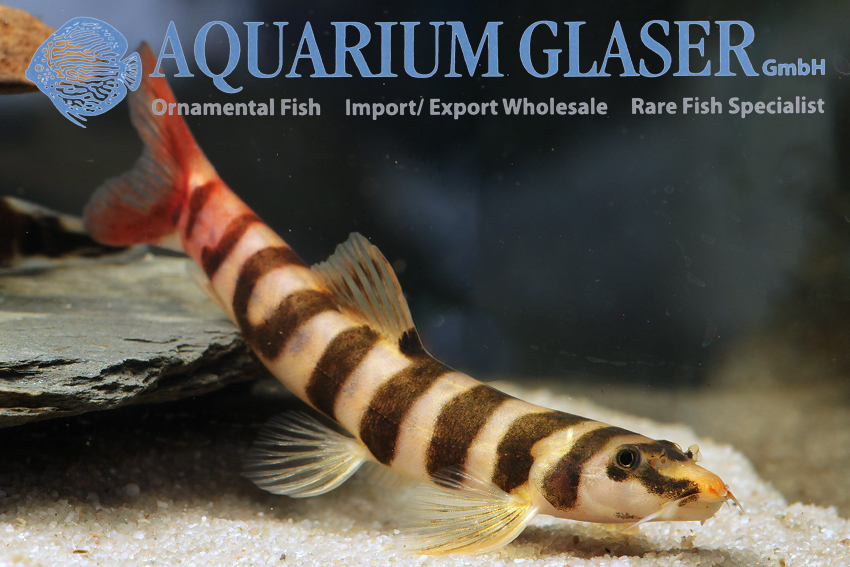
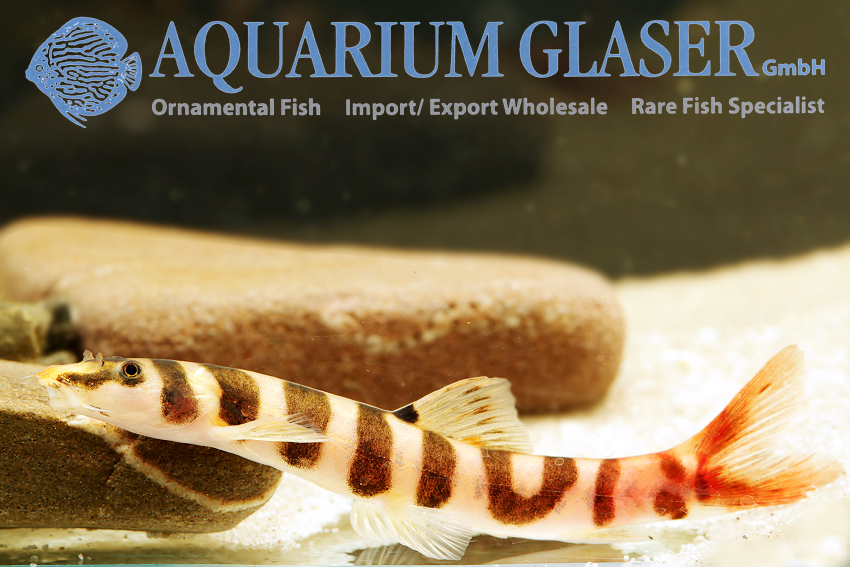
Kapuasia falaris got its species name from the white blaze on its snout. The word is derived from ancient Greek (phalaros: with a white spot and rhis: snout). The species has three to seven dark chocolate-brown pads on an ivory or pale pink background. Each animal is individually recognizable by its banding. The caudal fin can be colorless transparent, yellow or deep red, with or without spotting in the rear part. It is not yet known whether the coloration of the caudal fin is mood-dependent or permanent. What is known, however, is that caudal fin coloration is not sex-specific. Both males and females can have any of the aforementioned caudal fin colorations.
The differences between the sexes are in the form of a flap of skin under the eye, which only the males have. The females have a fold of skin in the same place. In addition, the pectoral fin rays of the males are thicker – as is usual in loaches. There are also small skin ridges between the pectoral fin rays of the males. Because the pectoral fins are clearly curved backwards, it can be assumed that Kapuasia falaris colonizes areas with strong currents in the biotope. In such conditions, the curvature of the pectoral fins acts like a spoiler on a car and allows the animal to remain close to the ground without exerting too much force. Unfortunately, no information is available on the natural habitat of the fish.
In any case, Kapuasia falaris, which could be referred to as the “Barito loach”, is a beautiful, very lively fish that can be compared quite well aquaristically with Kuhli loaches (Pangio): lovely, lively and somewhat hide-loving. The naturally still very few observations show that the loaches are very peaceful towards conspecifics and other fish and willingly accept any food offered (dry food, frozen food, tubifex, mosquito larvae). We have set the water temperature to approx. 26°C. In the wild, the water should be very soft and acidic, but this does not seem to be important for aquarium care. The animals are probably fully grown at 6-8 cm in length.
For our customers: the animals have code 421912 on our stocklist. Please note that we only supply the wholesale trade.
Literature:
Kottelat, M. & H. H. Tan (2024): Kapuasia, a genus name for ‘Nemacheilus’ maculiceps (Teleostei: Nemacheilidae). Raffles Bulletin of Zoology v. 72: 105-109
Kottelat, M., H. H. Tan & V. Hasan (2024): Kapuasia falaris, a new species of nemacheilid loach from Borneo (Teleostei: Nemacheilidae). Raffles Bulletin of Zoology v. 72: 479-487
Text & photos: Frank Schäfer




